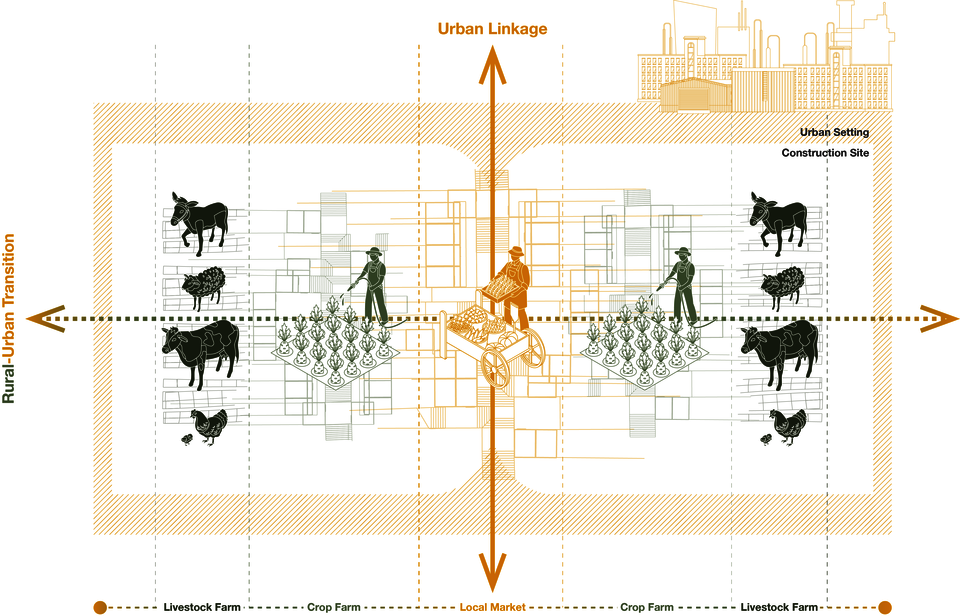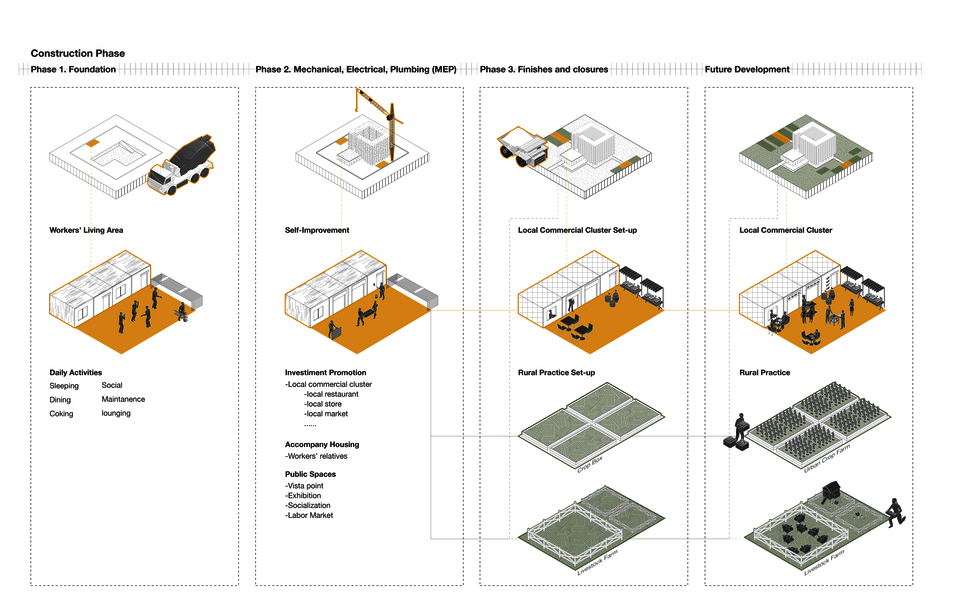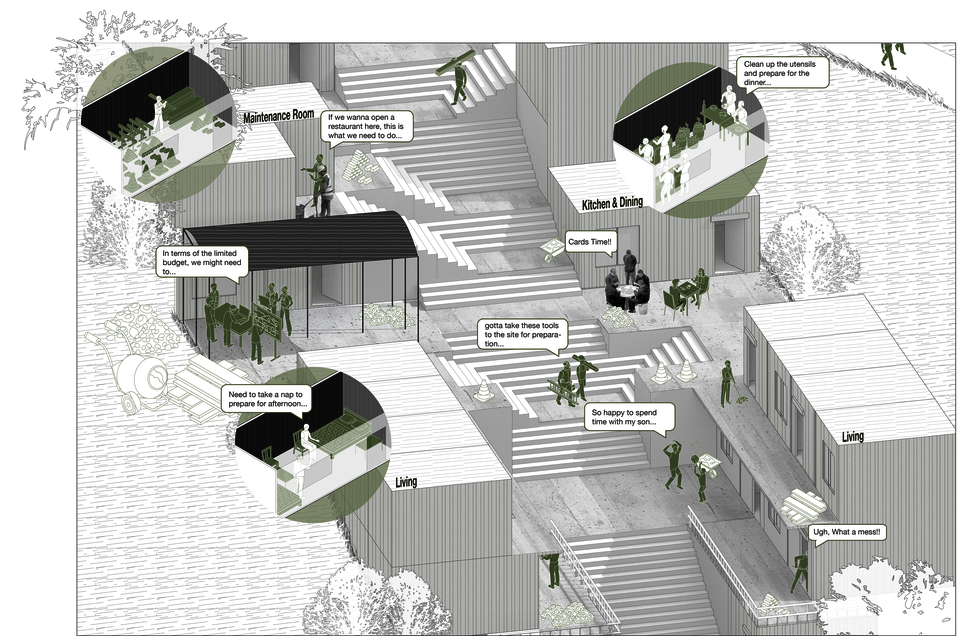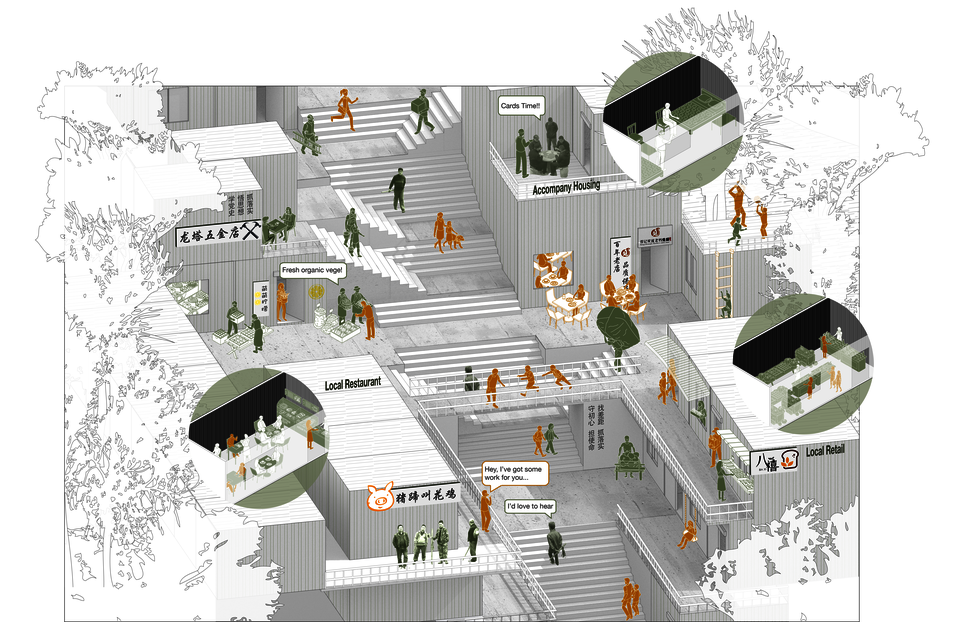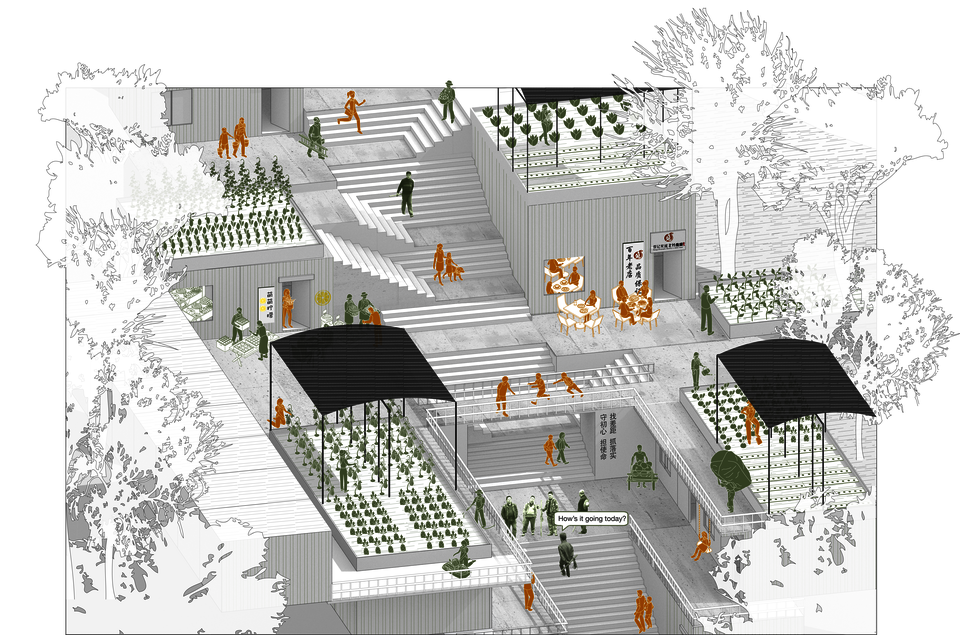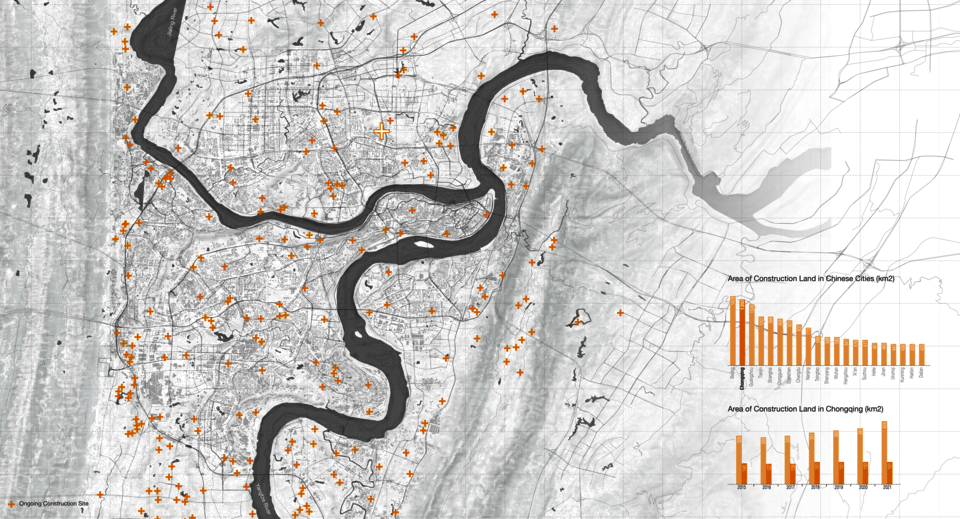Xinlei Gu
Arriving In the City: Reimagining the Urban Footholds for Rural Workers
China is now experiencing rapid urbanization and a significant movement of migrants from their original villages to established core cities. The homogenization resulting from the massive urbanization led to the identity crisis of the city itself, as well as the rural migrant workers, a phenomenon described as “Placelessness” (Edward Relph, 1976). As one of the Chinese megacities, Chongqing has gradually become placeless due to its fast-growing economy. Still, there are moments and places in Chongqing that reveal the migrant nature of the city and its close link with migrant laborers. In the thesis, such moments and places are defined as “Footholds” for rural workers in the urban context.
By studying the “Urban footholds” in Chongqing through the lens of its large rural migrant population, this thesis aims to form a growing foothold network that will evolve with the city's expansion. The study departs from the analysis of the physical setting, as well as on-site activities and the perspective of the workers’ experience in two typical sites, both of which present a tight bond between Chongqing and the rural migrant workers: the old clothing market in Yuzhong district; and the ongoing construction site in Yubei District. Several human-related conditions and landscape elements are extracted from the sites to understand the essence of Chongqing as a “place” and rural workers as a floating community. Eventually, these elements are utilized and integrated as a series of design and planning strategies to develop the foothold network that aims to not only serve as a mental map for rural workers to trace back their experiences in the city, but also as a testing ground for the next generation of immigrants coming to the city. The final goal of this thesis is to form a new contemporary metropolitan system for rural populations through landscape strategies. Such a system can not only become the stepping stone for immigrants to root their lives in the new city, but can sustain new urban platforms to benefit the city itself.
Image
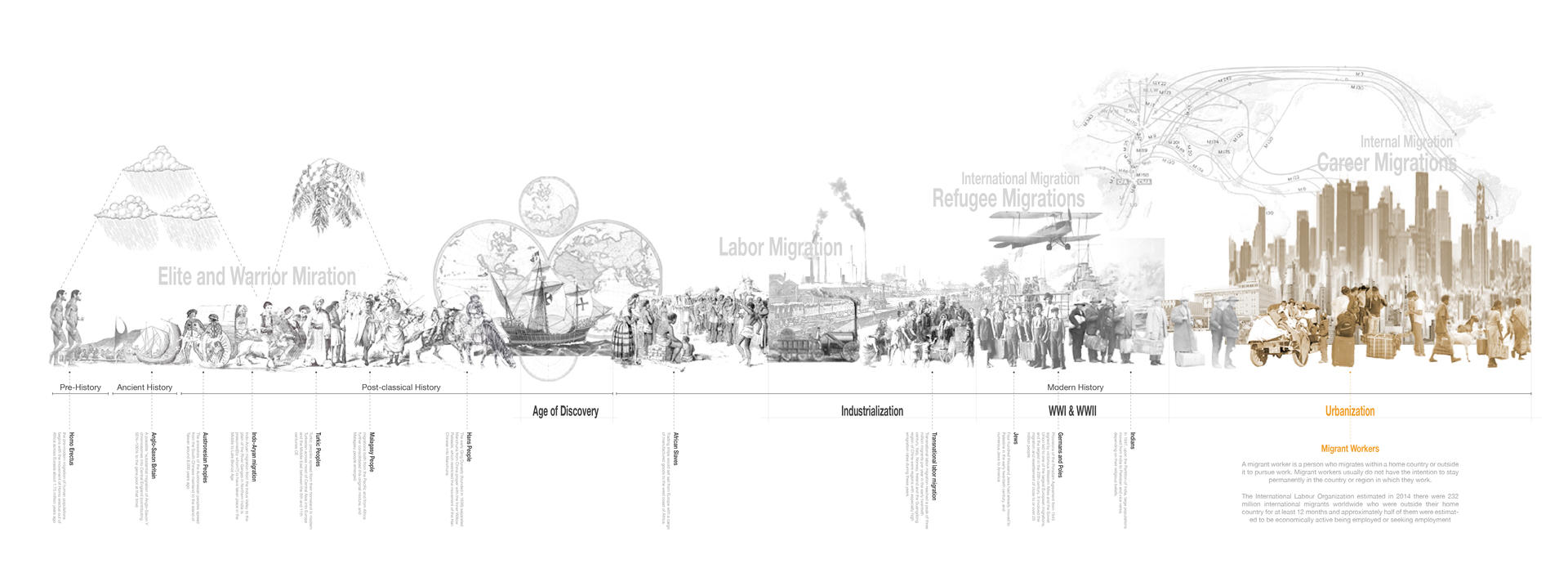
Immigrants In the City: A Linkage Between Rural and Urban
Floating China
At the turn of the twenty-first century, the world was experiencing some of the largest human movements in history due to worldwide urbanization. Approximately a third of the global population has been considered to exist in a “floating” state (Doug Saunders, 2010). Human fluxes manifest either from rural to city or between nation-states. “Immigrants” – one of the official names for these floating populations – establish the need for links between their homes and their destinations. They have a sense of nostalgia for home and, at the same time, need to establish a sense of belonging in the new place. By May 2021, China’s floating population was 375.81 million, accounting for 26.62% of the total. Among the floating population, the inter-provincial floating population is 124.83 million, and the intra-provincial floating population is 250.97 million.
Image
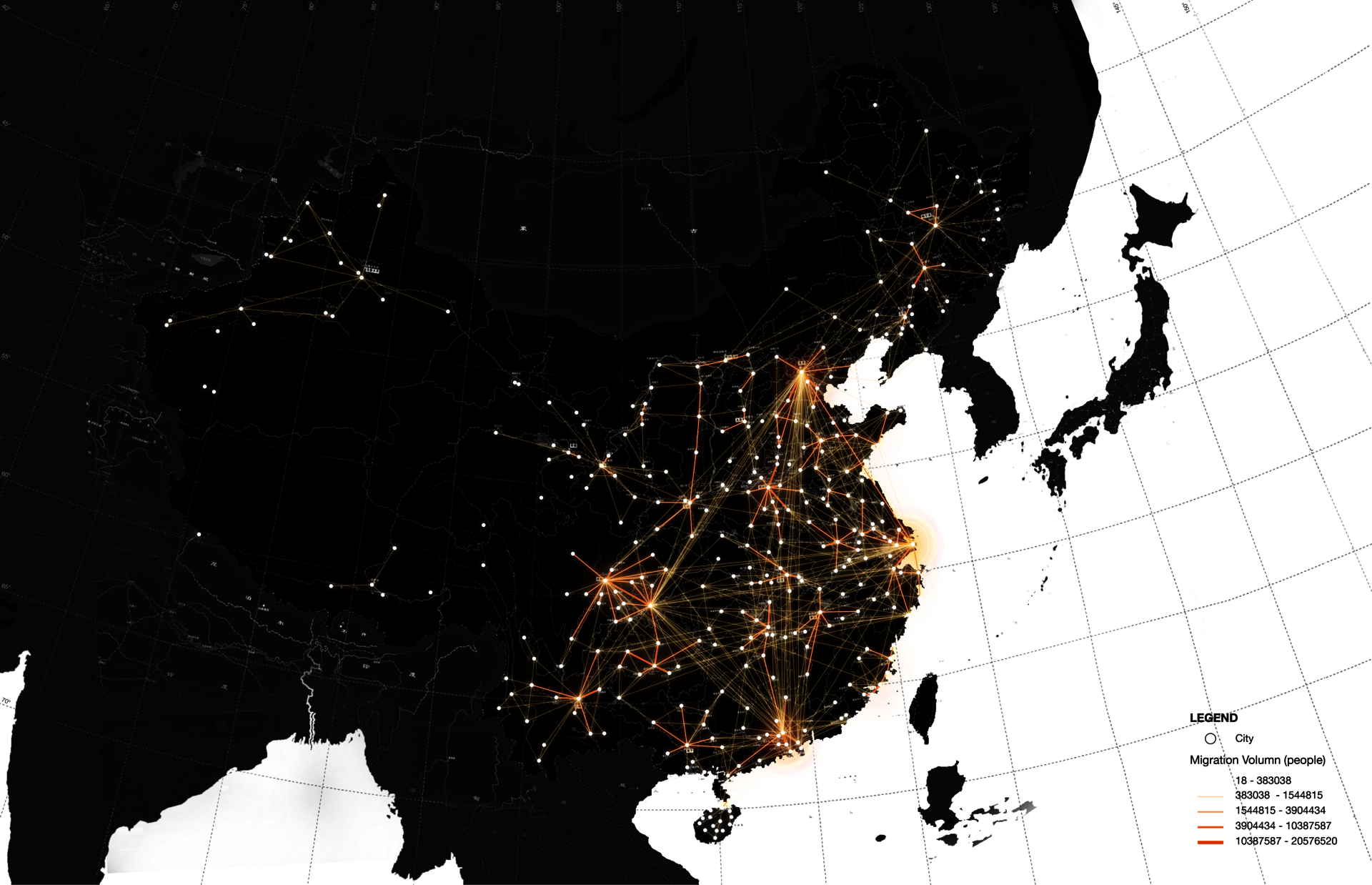
Migration Volume from cities to cities
Chongqing & Its Rural Workers
As the largest megacities in southwest China, Chongqing has over 30 million permanent residents, nearly half of whom hold rural hukou (the Chinese household registration system). Due to the rapid urbanization in Chongqing, most of these rural people choose to move to the city to seek a better life and more job opportunities. For thousands of years, Chongqing has experienced seven large-scale population migrations, which makes Chongqing fundamentally an immigrant city. Such migrant history, to some degree, influenced Chongqing's current urban planning policy: “one circle and two wings,” which aims to make Chongqing a mega rural-urban combination. Therefore, although Chongqing is highly urbanized, the rural population is still everywhere in the city. Meanwhile, Chongqing is unique due to its mountainous landscape and location (located at the intersection of the Yangtze River and Jialing River). Such geographical characteristics have spawned much manual labor even nowadays in Chongqing. The unique urban landscape and friendly planning policies mean that the landscape architects can engage in designing the “urban footholds” and think about the significance of these urban spaces and their relationship with rural workers.
Image
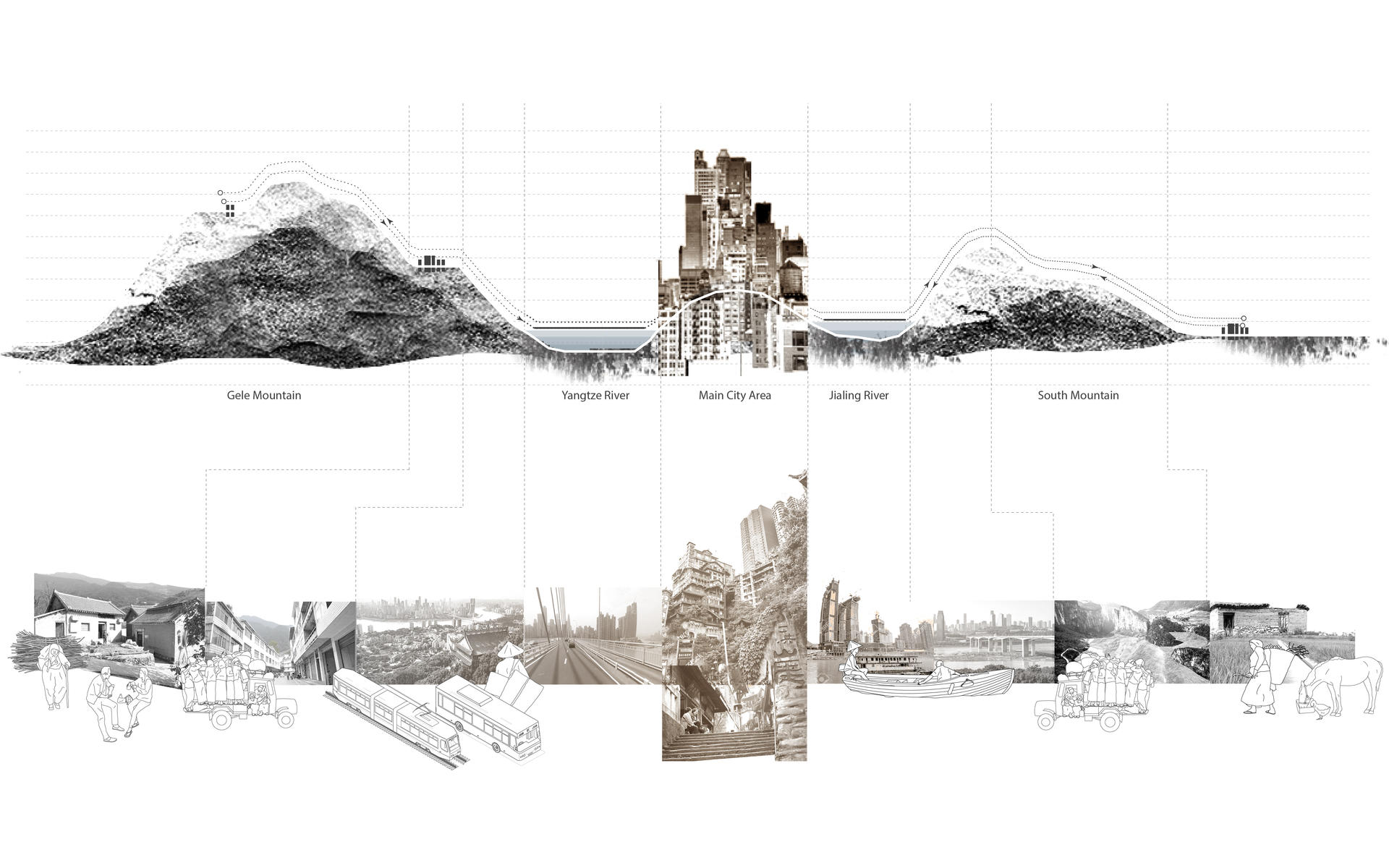
Journey Towards City - Land Perception
Past | Now | Future
As one of the megacities in China, Chongqing has gradually become placeless due to its fast-growing economy. Still, some places and moments in the city show its immigrant history, and it is tightly bound with migrant workers even now. One of the critical sites that offer the identity of old Chongqing is the clothing market in central Chongqing. Opened in 1990 and didn’t change for nearly 30 years; it shows the strong identity of Chongqing as an old mountain city and the past prosperity of migrant porters. By analyzing the old clothing market, I have extracted landscape and humanity elements that show the identity of Chongqing and migrant people, using these elements to develop a design toolbox. Then find design opportunities in other typical sites in Chongqing, the numerous construction sites. Find design opportunities in each of the construction phases, and as the construction is finished, there will always be a “left-over place” on the site for future migration. As the city is expanding, every finished construction site will leave a foothold for the migrant workers in the long term. Therefore will form a foothold network that is specifically for the rural workers. The network will grow with the city's expansion. The foothold network will become “new commons” in Chongqing as a linkage of rural and urban through multiple-scale spaces, activities, and emotions. Chongqing still retains its high pace of development but at the same time maintains its identity and becomes more welcoming and friendly to those who raised and built it.
Image
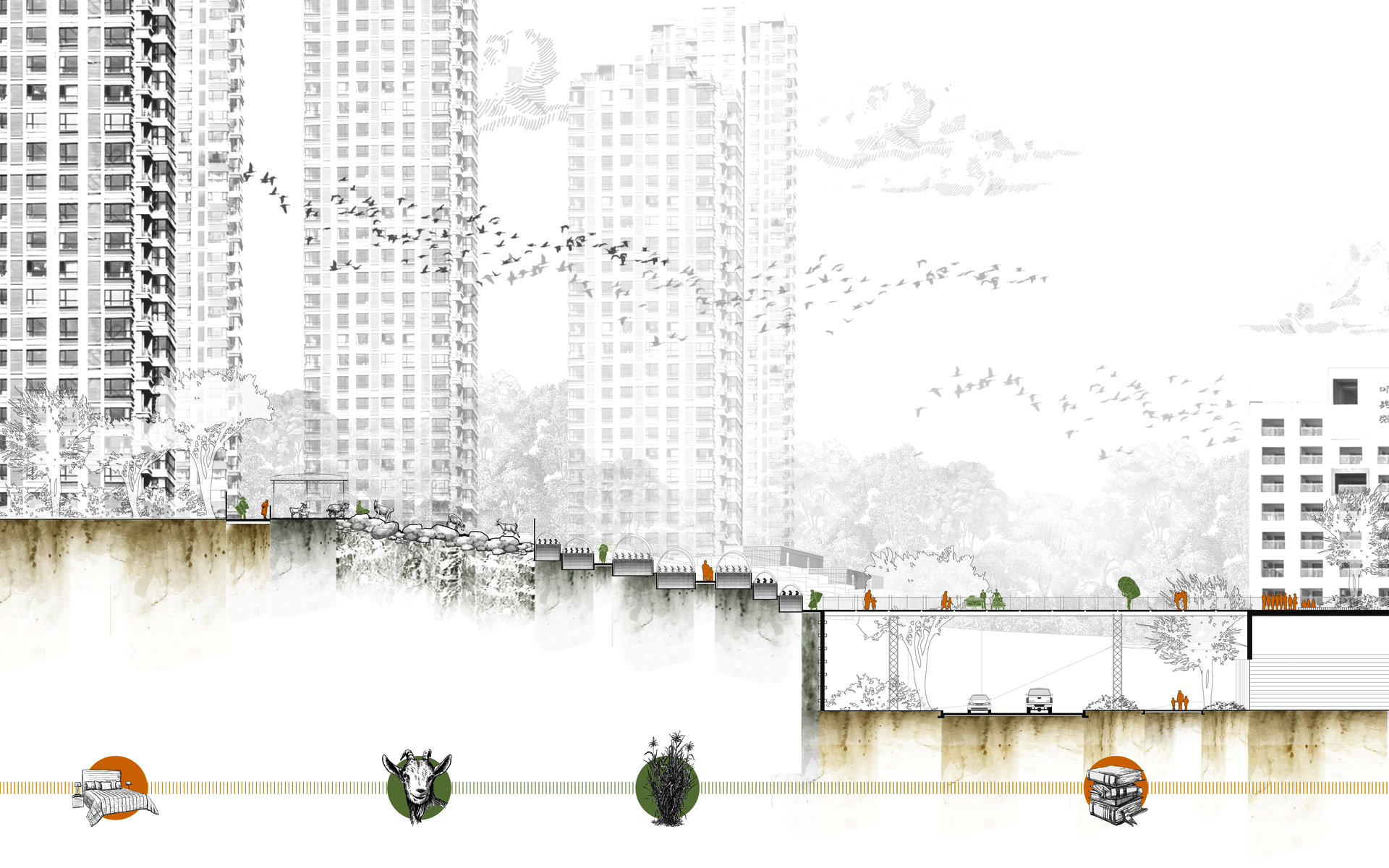
In-Between Farm
Future Foothold Community
- Architecture
- Ceramics
- Design Engineering
- Digital + Media
- Furniture Design
- Global Arts and Cultures
- Glass
- Graphic Design
- Industrial Design
- Interior Architecture
- Jewelry + Metalsmithing
- Landscape Architecture
- Nature-Culture-Sustainability Studies
- Painting
- Photography
- Printmaking
- Sculpture
- TLAD
- Textiles
